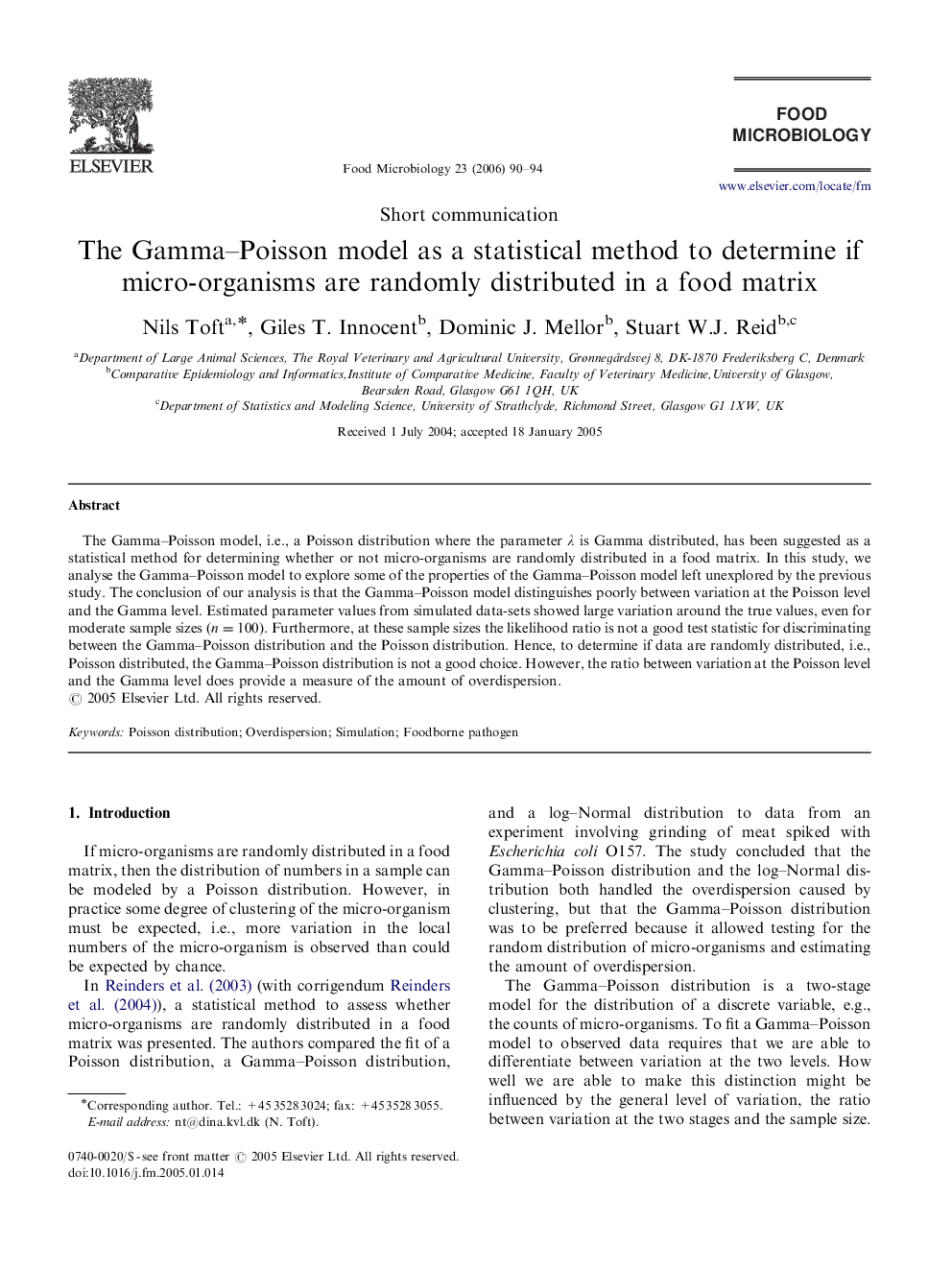| Article ID | Journal | Published Year | Pages | File Type |
|---|---|---|---|---|
| 4363966 | Food Microbiology | 2006 | 5 Pages |
The Gamma–Poisson model, i.e., a Poisson distribution where the parameter λλ is Gamma distributed, has been suggested as a statistical method for determining whether or not micro-organisms are randomly distributed in a food matrix. In this study, we analyse the Gamma–Poisson model to explore some of the properties of the Gamma–Poisson model left unexplored by the previous study. The conclusion of our analysis is that the Gamma–Poisson model distinguishes poorly between variation at the Poisson level and the Gamma level. Estimated parameter values from simulated data-sets showed large variation around the true values, even for moderate sample sizes (n=100n=100). Furthermore, at these sample sizes the likelihood ratio is not a good test statistic for discriminating between the Gamma–Poisson distribution and the Poisson distribution. Hence, to determine if data are randomly distributed, i.e., Poisson distributed, the Gamma–Poisson distribution is not a good choice. However, the ratio between variation at the Poisson level and the Gamma level does provide a measure of the amount of overdispersion.
